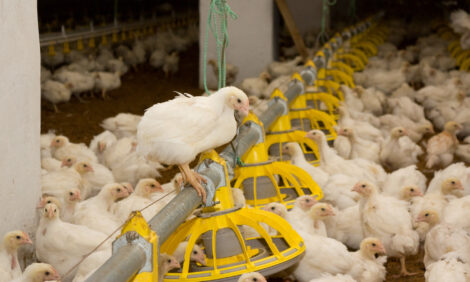



Biosecurity Measures Need Strict Enforcement to Protect Poultry Farms From Bird Flu
EUROPE - Strict enforcement of high levels of biosecurity measures is the most effective way to prevent the introduction of the highly pathogenic influenza virus A (H5N8) into poultry farms, according to the European Food Safety Authority EFSA.EFSA experts have identified and ranked a set of biosecurity measures that can be implemented in different areas of a farm that are classified as high or low risk – such as, respectively, a poultry house or places where feed is stored. These measures include preventing contact between wild birds and poultry, indoor housing of birds, and keeping geese and ducks separate from other poultry.
EFSA recommends the development of biosecurity guidance tailored to the needs of individual farms, preferably before an outbreak.
The European Commission asked EFSA to deliver urgent scientific advice on the effectiveness of protection measures currently in place to prevent further spread of the H5N8 virus. This request follows the outbreaks of the virus reported among wild birds and poultry across Europe since the end of October 2016.
Other findings of EFSA’s Statement are:
- When affected wilds birds are detected, monitoring of poultry should be applied to a geographical area defined by the habitat and flight distance of the affected birds. Moreover, competent authorities should raise awareness among farmers of biosecurity measures in such areas.
- Passive surveillance – reports of dead birds – is the most effective way to detect the virus in wild birds and poultry.
- Testing samples from species of wild birds previously not known to be affected by the virus and from areas where the virus has not been yet reported is useful to determine the geographical spread of the virus in wild birds.
EFSA experts will deliver a scientific opinion on avian influenza in 2017. The scientific opinion will assess the risk of other avian influenza viruses entering the EU, analyse biosecurity measures for turkeys and ducks and evaluate the mechanisms responsible for the mutation of low pathogenic avian influenza to high pathogenic avian influenza viruses.








